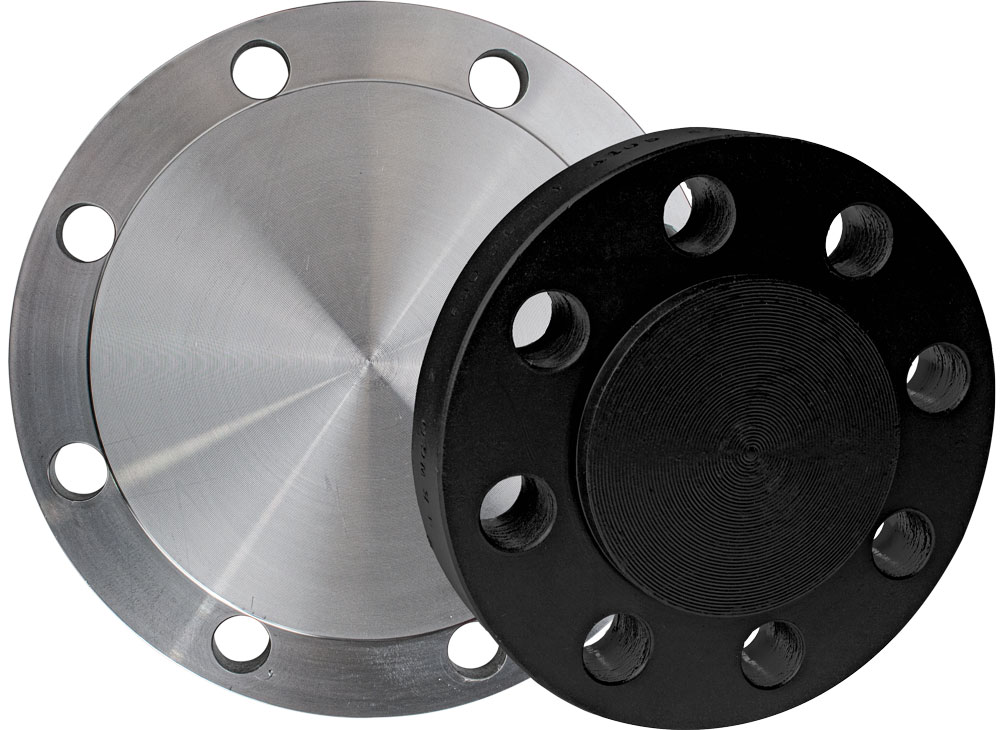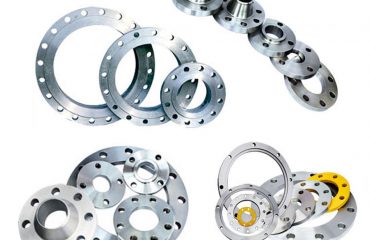
Blind Flanges: Comprehensive Guide on Materials, Standards, Sizes, and Specifications
Introduction
Blind flanges are an essential component in piping systems, used to close off the ends of piping, valves, or pressure vessel openings. Unlike other types of flanges, blind flanges do not have a central bore, making them ideal for sealing off a pipeline or creating a pressure-tight closure. They are commonly used in industries such as oil and gas, petrochemical, power generation, and water treatment.
In this comprehensive guide, we will explore the various aspects of blind flanges, including their materials, standards, sizes, thicknesses, pressure ratings, and face types. We will also provide detailed tables to help you understand the different specifications and options available for blind flanges.
What is a Blind Flange?
A blind flange is a solid disk-shaped flange used to block off a piping system or vessel opening. It is typically bolted to a pipe or valve flange and is used to stop the flow of fluid or gas. Blind flanges are commonly used in systems that require future expansion or maintenance, as they can be easily removed to allow access to the pipeline.
Key Features of Blind Flanges:
- No Central Bore: Unlike other flanges, blind flanges do not have a central opening, making them ideal for sealing off a pipeline.
- Pressure-Tight Seal: Blind flanges are designed to withstand high pressures, making them suitable for use in high-pressure systems.
- Removable: Blind flanges can be easily removed for maintenance or future expansion of the piping system.
Materials Used for Blind Flanges
Blind flanges are manufactured from a variety of materials, depending on the application and the environmental conditions in which they will be used. The most common materials include carbon steel, alloy steel, and stainless steel.
1. Carbon Steel Blind Flanges
Carbon steel is one of the most commonly used materials for blind flanges due to its excellent mechanical properties and cost-effectiveness. Carbon steel blind flanges are typically used in applications where high strength and durability are required, such as in oil and gas pipelines, power plants, and chemical processing plants.
Common Grades of Carbon Steel for Blind Flanges:
- ASTM A105: This is the most widely used carbon steel material for forged flanges, including blind flanges. It is suitable for high-pressure and high-temperature applications.
- ASTM A350 LF2: This is a low-temperature carbon steel material used for blind flanges in applications where the operating temperature is below freezing.
2. Alloy Steel Blind Flanges
Alloy steel blind flanges are used in applications that require enhanced mechanical properties, such as increased strength, toughness, and resistance to corrosion and high temperatures. Alloy steel blind flanges are commonly used in high-pressure and high-temperature environments, such as in power generation and petrochemical industries.
Common Grades of Alloy Steel for Blind Flanges:
- ASTM A182 F11: This is a chromium-molybdenum alloy steel used for high-temperature applications.
- ASTM A182 F22: This is another chromium-molybdenum alloy steel with enhanced strength and corrosion resistance, commonly used in high-temperature and high-pressure environments.
3. Stainless Steel Blind Flanges
Stainless steel blind flanges are used in applications that require excellent corrosion resistance, hygiene, and aesthetic appeal. Stainless steel blind flanges are commonly used in industries such as food processing, pharmaceuticals, water treatment, and chemical processing.
Common Grades of Stainless Steel for Blind Flanges:
- ASTM A182 F304: This is an austenitic stainless steel with good corrosion resistance and mechanical properties. It is commonly used in general-purpose applications.
- ASTM A182 F316: This is an austenitic stainless steel with enhanced corrosion resistance due to the addition of molybdenum. It is commonly used in more corrosive environments, such as marine and chemical processing applications.
- ASTM A182 F321: This is a stabilized austenitic stainless steel used in high-temperature applications.
Material Comparison Table
| Material | Grade | Composition | Key Properties | Common Applications |
|---|---|---|---|---|
| Carbon Steel | ASTM A105 | C, Mn, P, S | High strength, cost-effective | Oil and gas, power plants, chemical plants |
| Alloy Steel | ASTM A182 F11 | Cr, Mo | High strength, high-temperature resistance | Power generation, petrochemical |
| Alloy Steel | ASTM A182 F22 | Cr, Mo | Enhanced strength, corrosion resistance | High-pressure, high-temperature systems |
| Stainless Steel | ASTM A182 F304 | Cr, Ni | Good corrosion resistance | Food processing, pharmaceuticals |
| Stainless Steel | ASTM A182 F316 | Cr, Ni, Mo | Excellent corrosion resistance | Marine, chemical processing |
| Stainless Steel | ASTM A182 F321 | Cr, Ni, Ti | High-temperature resistance | High-temperature applications |
Standards for Blind Flanges
Blind flanges are manufactured according to various international standards to ensure their quality, safety, and compatibility with other components in a piping system. The most commonly used standards for blind flanges are ASTM A105 and ASTM A182.
1. ASTM A105
ASTM A105 is the standard specification for carbon steel forgings used in piping components, including flanges, fittings, and valves. This standard covers forged carbon steel blind flanges that are suitable for high-pressure and high-temperature applications.
Key Features of ASTM A105:
- Material: Carbon steel
- Applications: High-pressure and high-temperature systems
- Temperature Range: Suitable for temperatures up to 538°C (1000°F)
2. ASTM A182
ASTM A182 is the standard specification for forged or rolled alloy and stainless steel pipe flanges, fittings, and valves for high-temperature service. This standard covers blind flanges made from alloy steel and stainless steel.
Key Features of ASTM A182:
- Material: Alloy steel and stainless steel
- Applications: High-temperature and corrosive environments
- Temperature Range: Suitable for temperatures up to 870°C (1600°F) for alloy steel and 650°C (1200°F) for stainless steel
Standard Comparison Table
| Standard | Material | Applications | Temperature Range |
|---|---|---|---|
| ASTM A105 | Carbon Steel | High-pressure, high-temperature systems | Up to 538°C (1000°F) |
| ASTM A182 | Alloy Steel, Stainless Steel | High-temperature, corrosive environments | Up to 870°C (1600°F) for alloy steel, 650°C (1200°F) for stainless steel |
Sizes of Blind Flanges
Blind flanges are available in a wide range of sizes to accommodate different piping systems. The standard sizes for blind flanges range from 1/2 inch to 24 inches in diameter, but customized sizes up to 48 inches are also available for specific applications.
Standard Sizes for Blind Flanges
| Nominal Pipe Size (NPS) | Outside Diameter (OD) | Number of Bolt Holes | Bolt Hole Diameter |
|---|---|---|---|
| 1/2″ | 3.50″ | 4 | 0.63″ |
| 1″ | 4.25″ | 4 | 0.63″ |
| 2″ | 6.00″ | 4 | 0.75″ |
| 4″ | 9.00″ | 8 | 0.75″ |
| 6″ | 11.00″ | 8 | 0.88″ |
| 12″ | 19.00″ | 12 | 1.13″ |
| 24″ | 31.50″ | 16 | 1.38″ |
Customized Sizes
For specialized applications, blind flanges can be manufactured in custom sizes up to 48 inches in diameter. These custom flanges are typically used in large-diameter piping systems, such as those found in oil refineries, chemical plants, and power generation facilities.
Thickness of Blind Flanges
The thickness of a blind flange is determined by the schedule of the pipe to which it will be attached. The schedule refers to the wall thickness of the pipe, and it affects the overall strength and pressure rating of the flange. Blind flanges are available in thicknesses ranging from Schedule 10(S) to Schedule 160.
Common Thicknesses for Blind Flanges
| Schedule | Nominal Pipe Size (NPS) | Flange Thickness (inches) |
|---|---|---|
| Schedule 10(S) | 1/2″ to 24″ | 0.25″ to 1.25″ |
| Schedule 40 | 1/2″ to 24″ | 0.50″ to 1.50″ |
| Schedule 80 | 1/2″ to 24″ | 0.75″ to 2.00″ |
| Schedule 160 | 1/2″ to 24″ | 1.00″ to 2.50″ |
Customized Thicknesses
For applications that require higher pressure ratings or specific design criteria, blind flanges can be manufactured with customized thicknesses. These custom flanges are typically used in high-pressure and high-temperature systems, such as those found in nuclear power plants and oil refineries.
Pressure Ratings for Blind Flanges
Blind flanges are available in a range of pressure ratings to accommodate different operating conditions. The pressure rating of a blind flange is determined by its class, which indicates the maximum pressure the flange can withstand at a given temperature. Blind flanges are available in pressure ratings ranging from Class 150 to Class 2500.
Pressure Rating Classes for Blind Flanges
| Class | Pressure Rating (psi) | Applications |
|---|---|---|
| Class 150 | 150 psi | Low-pressure systems |
| Class 300 | 300 psi | Medium-pressure systems |
| Class 600 | 600 psi | High-pressure systems |
| Class 900 | 900 psi | High-pressure, high-temperature systems |
| Class 1500 | 1500 psi | Very high-pressure systems |
| Class 2500 | 2500 psi | Extremely high-pressure systems |
Pressure Rating vs. Temperature
The pressure rating of a blind flange decreases as the operating temperature increases. The following table shows the maximum allowable pressure for a Class 150 blind flange at different temperatures:
| Temperature (°F) | Pressure Rating (psi) |
|---|---|
| 100°F | 285 psi |
| 200°F | 260 psi |
| 300°F | 230 psi |
| 400°F | 200 psi |
| 500°F | 170 psi |
| 600°F | 140 psi |
Face Types for Blind Flanges
Blind flanges are available with different face types to ensure a proper seal between the flange and the mating component. The most common face types for blind flanges are Raised Face (RF) and Ring Type Joint (RTJ).
1. Raised Face (RF)
The Raised Face (RF) is the most common face type for blind flanges. It features a small raised area around the bore of the flange, which helps to concentrate the sealing pressure on the gasket. Raised face flanges are used in a wide range of applications, including low-pressure and high-pressure systems.
2. Ring Type Joint (RTJ)
The Ring Type Joint (RTJ) face type is used in high-pressure and high-temperature applications. It features a groove in the face of the flange that holds a metal ring gasket, which creates a pressure-tight seal. RTJ flanges are commonly used in oil and gas, petrochemical, and power generation industries.
Face Type Comparison Table
| Face Type | Description | Applications |
|---|---|---|
| Raised Face (RF) | Raised area around the bore for gasket sealing | General-purpose applications, low to high pressure |
| Ring Type Joint (RTJ) | Groove for metal ring gasket, pressure-tight seal | High-pressure, high-temperature systems |
Conclusion
Blind flanges are a critical component in piping systems, providing a reliable and pressure-tight closure for pipelines, valves, and pressure vessels. They are available in a wide range of materials, sizes, thicknesses, pressure ratings, and face types to suit different applications and operating conditions.
When selecting a blind flange, it is important to consider factors such as the material, pressure rating, temperature, and face type to ensure the flange meets the specific requirements of your system. By understanding the various options available for blind flanges, you can make an informed decision and ensure the long-term reliability and safety of your piping system.
For more detailed information or assistance with selecting the right blind flange for your application, consult with a piping engineer or flange manufacturer who can provide expert guidance based on your specific needs.




You must be logged in to post a comment.